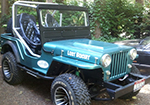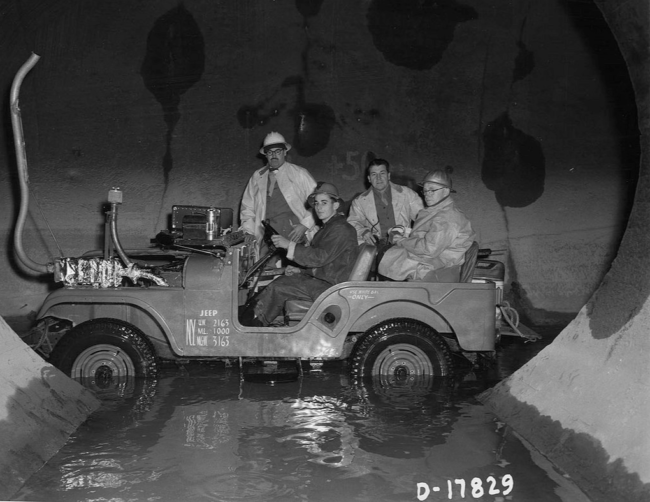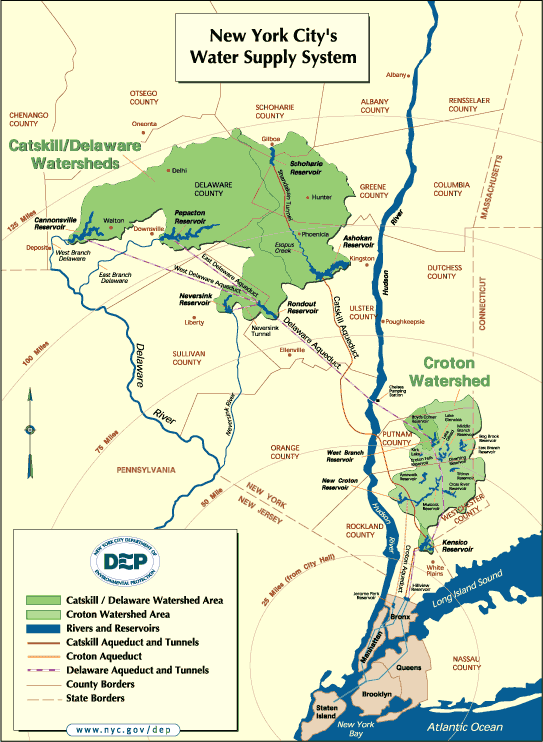Paul spotted this photo of a CJ-5 used to navigate the length of the 85-mile Delaware Aqueduct in 1957, still the longest tunnel in the world (construction photos). This was the last time the tunnel was navigate in its entirety. Because of the knowledge gained during their survey, the last living member of this party, Victor Feigelman, was consulted on the state of the tunnel up until his death in 2016.
If you zoom into the area just above gas inlet you’ll note the warning: USE WHITE GAS –ONLY–. The need to limit effluents inside the tunnel also explains the odd exhaust setup.
From Wikipedia, the Delaware Aqueduct … takes water from the Rondout Reservoir through the Chelsea Pump Station, the West Branch Reservoir, and the Kensico Reservoir, ending at the Hillview Reservoir in Yonkers, New York. The aqueduct was constructed between 1939 and 1945, and carries approximately half of the New York City water supply of 1.3 billion US gallons (4,900,000 m3) per day. At 85 miles (137 km) long and 13.5 feet (4.1 m) wide, the Delaware Aqueduct is the world’s longest tunnel.



White gas is a common name for a number flammable substances:
In its most common modern usage, “white gas” is used as a generic name for camp stove and lantern fuel, usually naphtha
White gasoline (or white gas) is also another name for pure gasoline (without additives), commonly used when leaded gasoline was the norm to prevent fouling in situations where the properties of the lead additive were not required
“White gas” can also refer to un-dyed gasoline
White gas should not be confused with white spirit, which is more akin to kerosene.
https://en.wikipedia.org/wiki/White_gas
Lead-free gasoline[edit]
While most oil companies were switching to leaded gasolines en masse during the mid-to-late 1920s, American Oil chose to continue marketing its premium-grade “Amoco-Gas” (later Amoco Super-Premium) as a lead-free gasoline by using aromatics rather than tetraethyllead to increase octane levels, decades before the environmental movement of the early 1970s led to more stringent auto-emission controls which ultimately mandated the universal phase out of leaded gasoline. The “Amoco” lead-free gasoline was sold at American’s stations in the eastern and southern U.S. alongside American Regular gasoline, which was a leaded fuel. Lead-free Amoco was introduced in the Indiana Standard marketing area in 1970.[6] The Red Crown Regular and White Crown Premium (later Gold Crown Super Premium) gasolines marketed by parent company Standard Oil (Indiana) in its prime marketing area in the Midwest before 1961 also contained lead.[7]
https://en.wikipedia.org/wiki/Amoco
Thanks Steve. I didn’t realize the difference.
I think it’s pretty amazing that a man-made structure has not been seen by man in its entirety since 1957. Neat bit of Jeep related history. Thanks for posting!
That is very amazing.
The tunnel/aqueduct is close by to where I live and is known to be not so water tight. Much of it is unlined and presumably the water recharges groundwater that neighbors pump from their wells. Efforts are under way to find the leaks and repair them. In Ellenville, seen on the map, the water from the tunnel surfaces. Before 9-11 security took hold some of the aqueduct was great for light jeeping.